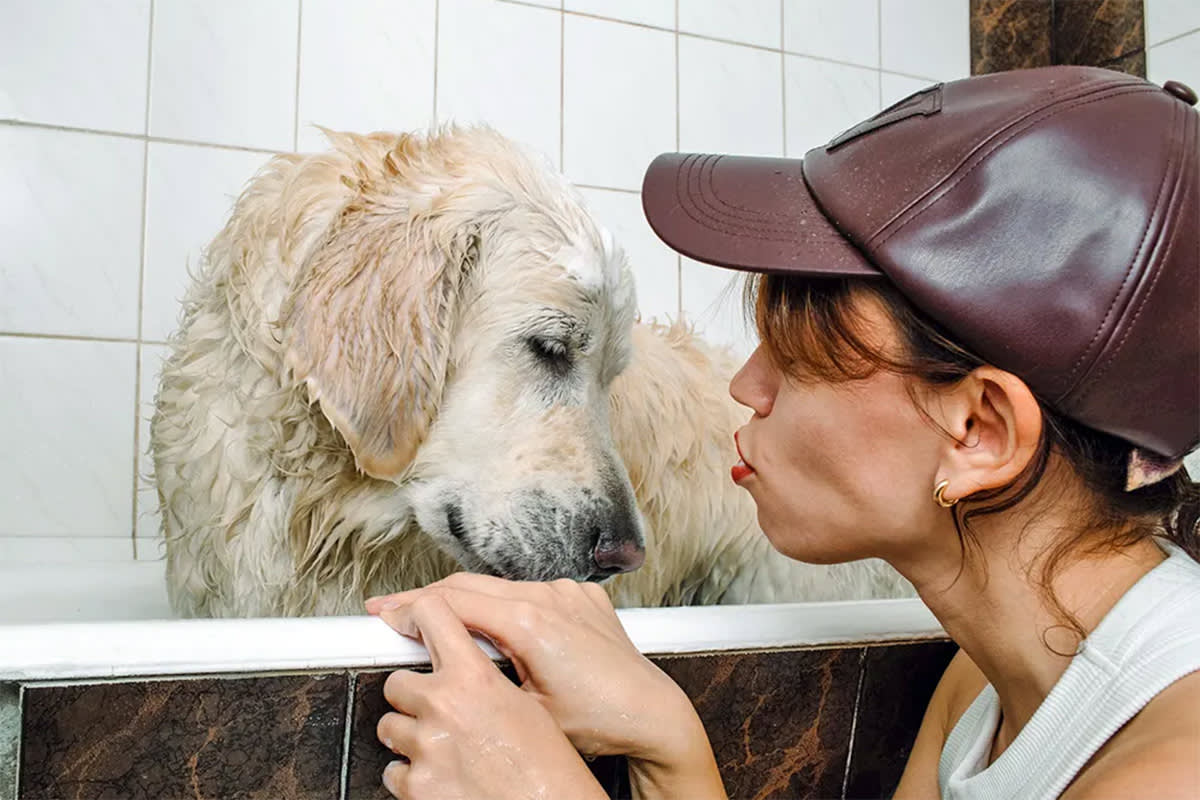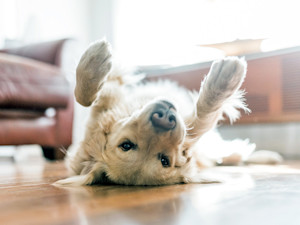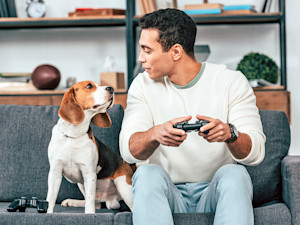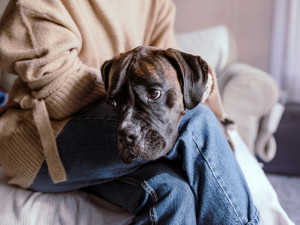The One Thing You Should Never Do When Giving Your Dog a Bath
It could cause bigger problems down the line.
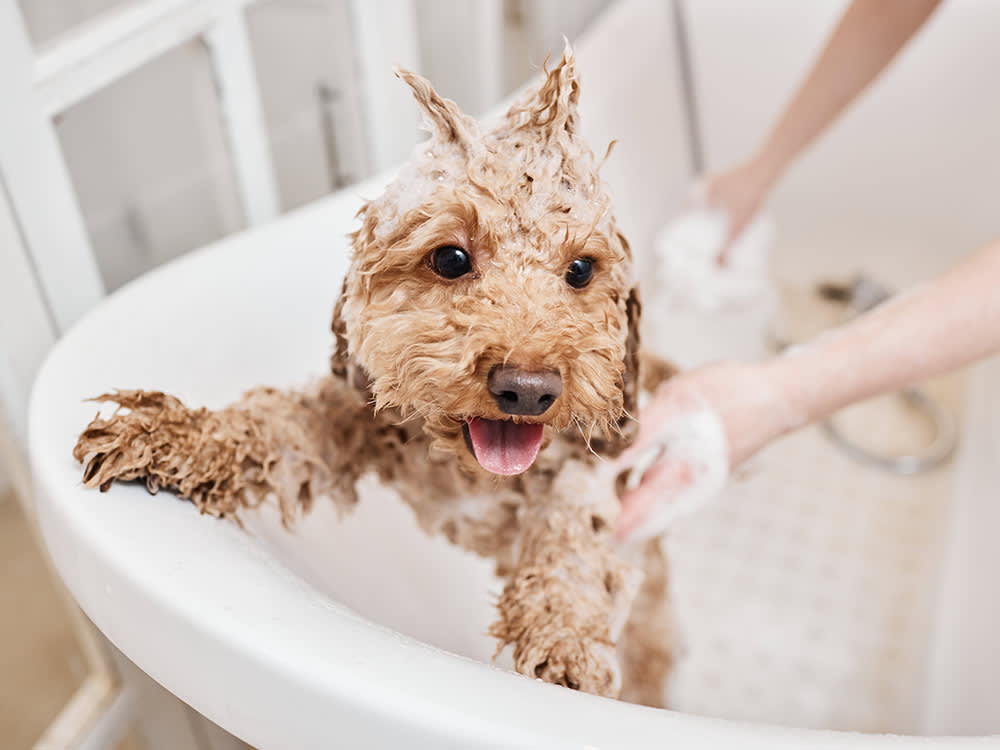
Share Article
Doggie bath time can be difficult. After all the wrangling, getting the water temperature right, and making sure you’ve done enough rinsing, it can be tempting for the shake-off to be the final step (especially because you usually wind up the victim of the post-bath spray). But it is essential that every time you bathe your pup, you make sure you dry them off at the end of it.
Excess moisture in their coat can lead to issues down the road, and we’re not just talking about a stinky, wet-dog scent. Whether it’s moisture under a matted piece of fur, or a bit of excess water in their ear, irritation can occur, leading to scratching.
“When dogs feel pain, they’re not going to say ‘this hurts,’ and leave it alone,” says veterinarian Dr. Michael Rossi of American College of Veterinary Dermatologyopens in new tab. “They’re going to start scratching at it and sometimes chewing at it.”
That scratching creates an irritated area called a hot spot — and likely an unexpected vet bill.

What are hot spots?
Pyotraumatic dermatitis or acute moist dermatitis are the medical terms for hot spots, and while they aren’t necessarily infections, they can quickly grow and easily become infected.
Dr. Jerry Klein, chief veterinarian for American Kennel Clubopens in new tab (AKC), says there is typically an inciting reason for a dog to start scratching, and once they get started, a self-inflicted lesion can progress rapidly. If the hot spot becomes infected and goes unaddressed, bacteria, like a staph infection, can be concerning for the health of the pet and the humans around them, he adds.
“It’s a common problem,” he says. And from his 35 years of experience as an emergency veterinarian, he finds that it’s often at 1 a.m. when pup parents notice. The incessant scratching jingles the dog’s collar, leading to a sleepless night for the parent and compounding discomfort for the dog.
How are hot spots treated?
“They can heal rapidly if the dog will leave it alone,” Dr. Klein says. A combination of prompt care and prevention of aggravating the lesion will help it heal, often in just a few days.
Treating hot spots involves first clipping any hair in the affected area and cleaning it with an antimicrobial solution, according to veterinarian Dr. Brian Collins, an extension associate at the Cornell Riney Canine Health Centeropens in new tab. Then, veterinarians use a topical steroid ointment on the affected area, and some will also prescribe oral steroids to reduce inflammation. Any infection on the skin or in the ears will also be addressed, and an Elizabethan collar (aka a cone) will help keep them from scratching the affected area.
One home remedyopens in new tab that Dr. Rossi mentions is diluted apple cider vinegar, which is an antiseptic — but he cautions against this. Apple cider vinegar contains acetic acid, which can further contribute to irritation. Ideally, a dog with a hot spot will see a veterinarian sooner rather than later. “We don’t want it to fester too long, because it can create more issues,” Dr. Rossi adds.
Are certain breeds more likely to develop hot spots?
Dogs with long or thick coats are most likely to experience hot spots due to moisture on the skin. Dr. Collins specifically mentions Golden Retrievers, German Shepherds, Collies, Spaniels, and Saint Bernards. Beyond hot spots, he mentions that dogs with heavy coats or underlying skin conditions can develop bacterial or fungal infections as well.
Dr. Klein echoes that a dog’s propensity to hot spots from moisture depends on their coat. Double-coated dogs, such as Poodles and Goldendoodles, often develop matting of the fur, which traps in moisture between the mat and skin, creating additional issues.
“Having a dog wet doesn't necessarily lead to a skin infection,” Dr. Klein says. But if the skin is compromised in some way, moisture can contribute to greater infections.
What should pet parents use to dry off their dogs?
Similar to when we towel-dry our hair, dogs don’t need to be completely dry after a bath, Dr. Collins says. They should continue to dry in the sun or inside in a warm area. However, if the dog has a history of hot spots, allergies, and other skin conditions, they could benefit from additional drying. And if a dog is prone to ear infections, he recommends that pet parents gently dry the dog’s ears with cotton balls.
Any towels available will do fine, but higher quality towels that are more absorbent and efficient will help in the drying process, especially on larger, thick-coated dogs, he adds. Dr. Collins recommends a dog-friendly dryer with forced cool air as the safest method for additional drying.
Dr. Rossi agrees that “towel [drying] in most cases on a short-coated dog is fantastic.” For thick-coated dogs that will tolerate it, he recommends a hair dryer on a warm or cool setting. However, he cautions against using it around the ears, as that can force more water in and contribute to ear infections.
What else can pet parents do to prevent this?
“Because it comes on so rapidly, you may miss it,” Dr. Klein says. Being aware is key.
He advises pet parents to inspect an itchy dog, looking in their ears to be sure they’re not red, and parting the fur to see the skin. And even if a wound is minuscule, it can become severe in just a few hours, so pet parents should act quickly to bring them to a veterinarian, he says.
On a more regular basis, Dr. Klein advises that owners routinely look in their dog’s ears and even smell their dogs. “You know what your dog should smell like, look like, and act like,” he says. If there’s a foul smell, there’s a reason.
Keeping dogs well-groomed and free from underlying mats will also help prevent hot spots, especially if the weather is humid or the dog is going swimming, he adds.
What else causes hot spots?
“Dogs can get wet and not have issues,” Dr. Klein says. It’s those with matting that tend to experience hot spots due to moisture most often. Ear infections are the most frequent result of the high-moisture/hot spot combo.
Water in a bath or pool can get in the dog’s ear and cause an infection, leading them to scratch at the neck and throat area due to discomfort. This causes the hot spot.
Other causes of hot spots include allergies, tick or flea bites, anal gland problems, and even painful muscles or joints. If pet parents notice a history of scratching at certain times of year, they should track that in hopes of preventing a problem. Especially related to allergies, treating the cause will help prevent any future hot spots, Dr. Klein adds.

Lauren Dixon
Lauren Dixon is a journalist based in Chicago. She has work published in Block Club Chicago, The Chicago School’s Insight, and Chief Learning Officer, among other places. Besides pet parenting and pet behavior, she covers technology and the staffing industry. She is the proud mom of a disabled but unstoppable calico kitty named Sookie and an anxious Cattle Dog mix, Spider-Man. (No, they are not friends.)
Related articles
![a Chihuahua dog licking their paw]()
Why Do Dogs Lick Their Paws?
Their toes might smell like Fritos, but there’s no way they taste that good.
![Cute Golden Retriever rolling on the floor at home.]()
5 Reasons Your Dog Is Obsessed With Rolling Around on the Floor
It looks super wacky, but they obviously don’t care.
![Man on the couch with his dog.]()
12 Things Your Dog Wishes They Could Ask You For
Tell me what you want, what you really, really want.
Why Does Your Dog Have Dandruff?
So itchy and no fun.
Why Is My Dog Constantly Scratching, Itching, and Biting Themself?
Here are the most common causes and what you can do about it.
![Sad boxer rests on owners lap, dog doesn't want to be touched]()
How to Tell if Your Dog Is in Pain
And what to do to help them.

